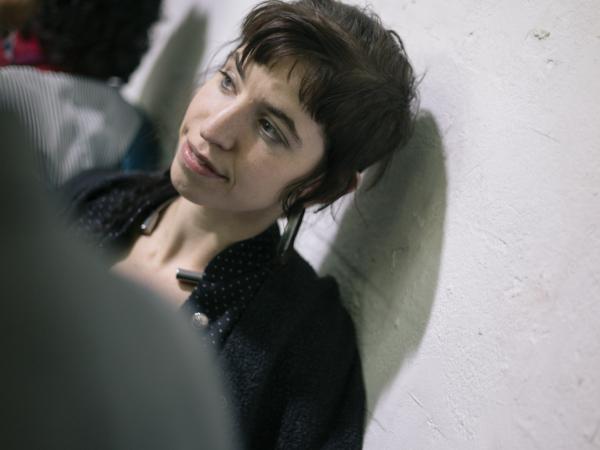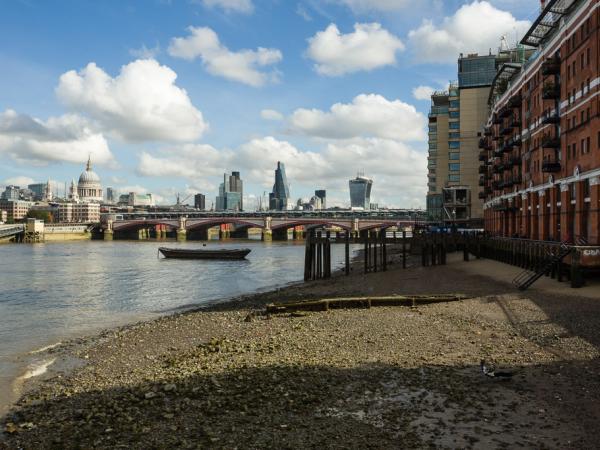The crowd and the religious experience. A path through images
From 2nd March to 22nd April at Museo di Roma in Trastevere 35 images by the Roman
photographer Andrea Pacanowski describe the collective dimension of religiosity
These pictures, taken wandering around in the “holy towns” of the monotheistic religions, describe the collective dimension of religiosity in the media global era through elaborated reflections effects made before the photographic click. The Roman artist Andrea Pacanowski shows his unique project at Museo di Roma in Trastevere from 2nd March to 22nd April in the exhibition “All’infuori di me” The crowd and the religious experience: a selection of 35 photographs by Diego Mormorio, promoted by the Assessorato alle Politiche Culturali e Centro Storico – Sovraintendenza ai Beni Culturali di Roma Capitale. Organisation 4busy , organisation support and museum services Zètema Progetto Cultura.
Pacanowski does not use any post-production in his pictures but he works on the chosen subjects through an extraordinary use of the light sources and the diaphragm and with the effects created by glasses and reflective surfaces. In this way he overcomes the verisimilitude criteria approaching the abstract painting and the crowds become splashes of colour. By observing his pictures from a certain distance you catch their figurative nature, while moving closer you dip into a hive of splashes of colour that give the chromatic feeling.
This is an artistically unique way, rich in creativity, to approach the subject of religion as a social and media event. Nowadays the religious gathering moments are not an experience limited to the participants anymore, but they become images, videos, materials destined to be decomposed and recomposed in the global media universe. Today we fight the battle for visibility, compared to the long lasting past during which religion dominated the public space and defined also the boundaries between working time and leisure time. The religious man has to fight to affirm the specificity of the message that he represents. In this challenge, the quality and the power of images, the majesty of ceremonies, the aggregating aspect of crowds, the collective celebrations are the strategic key resources that big monotheistic religions (in particular Christianity and Islamism) have at their disposal to mark their capability to distinguish from new cults à la carte and to establish their power through the enormous number of their believers.
Photographer by education and painter by vocation – as the curator Diego Mormorio states - Andrea Pacanowski conducts the light through alternative ways, using canvas, colours and many devices with the purpose to create photographs that do not belong to ordinary photography. His pictures lay on paintings which are like nets that trap the images passing by through the shutter of his camera. He is a painter being a photographer and a photographer being a painter: he is the author of images that are not pictures nor paintings, but photographic meta-paintings and meta- pictorial photographs. […] Andrea Pacanowski’s images represent the mark of a poetic idea of the existence, transformed by the creative act, that goes beyond the mirror, where Alice waits to be joined. These images live in the enchantment originated by the transformation of things during their reflection process, which represents always and basically, as in all other ways, the transfiguration process. In fact the world is physical temporality, observed by a temporary eye itself, that for those who really want to see reality, wishes to catch the eternity and the instant at the same time. […] The images that Pacanowski offers to our look are like a river that slowly flows and on which various shadows slide. We only have to look at them, caress the colours and feel ourselves caressed by them. Everything else is useless, and maybe even harmful.
The catalogue by Angelo Mellone and Diego Mormorio collects the essays by: Diego Mormorio, critic and expert in History of Photography; Mario Morcellini, Director of Communications and Social Research Department, Sapienza University of Rome; Angelo Mellone, journalist and writer, manager of Radio Rai; Monsignor Giangiulio Radivo; Omar Camilletti, journalist and writer; Cesare Terracina, expert of aesthetics; Julie Kogler, art critic.
On 12 April at 17.30 in Museo di Roma in Trastevere there will be a discussion meeting on The crowd and the religious experience.
Biography Andrea Pacanowski was born in Rome in a family of artists: his father was an architect, his aunt was a painter of “Ecole de Paris”, his grandmother was a sculptor. On these basis he developed his education: he took the diploma at the art high school and started to rise through the ranks in Alberta Tiburzi studio, an Italian photographer internationally known. He is then a fashion photographer for more than 20 years. He worked in Italy and abroad, mostly in Canada and in the United States, contributing to editorials, publications and advertising campaigns. He currently lives and works in Rome. In 2008, following his continuous experimentation and dialogue with the new art trends, starts his evolution and technical research in which photography mixes with painting in a unique union. The photographic language is so exasperated to lead to the creation of three-dimensional pictorial images. Thanks to the use of an innovative technique, that leaves photography without any intervention of post-production, the picture turns into a painting. This photographic technique, complex and elaborated, has been developed also at audiovisual level, with the added value of movement, dynamism and sound, in “Acquario”, the video installation that sums up at present his innovative artistic and photographic strength.








Comments 2
Say something